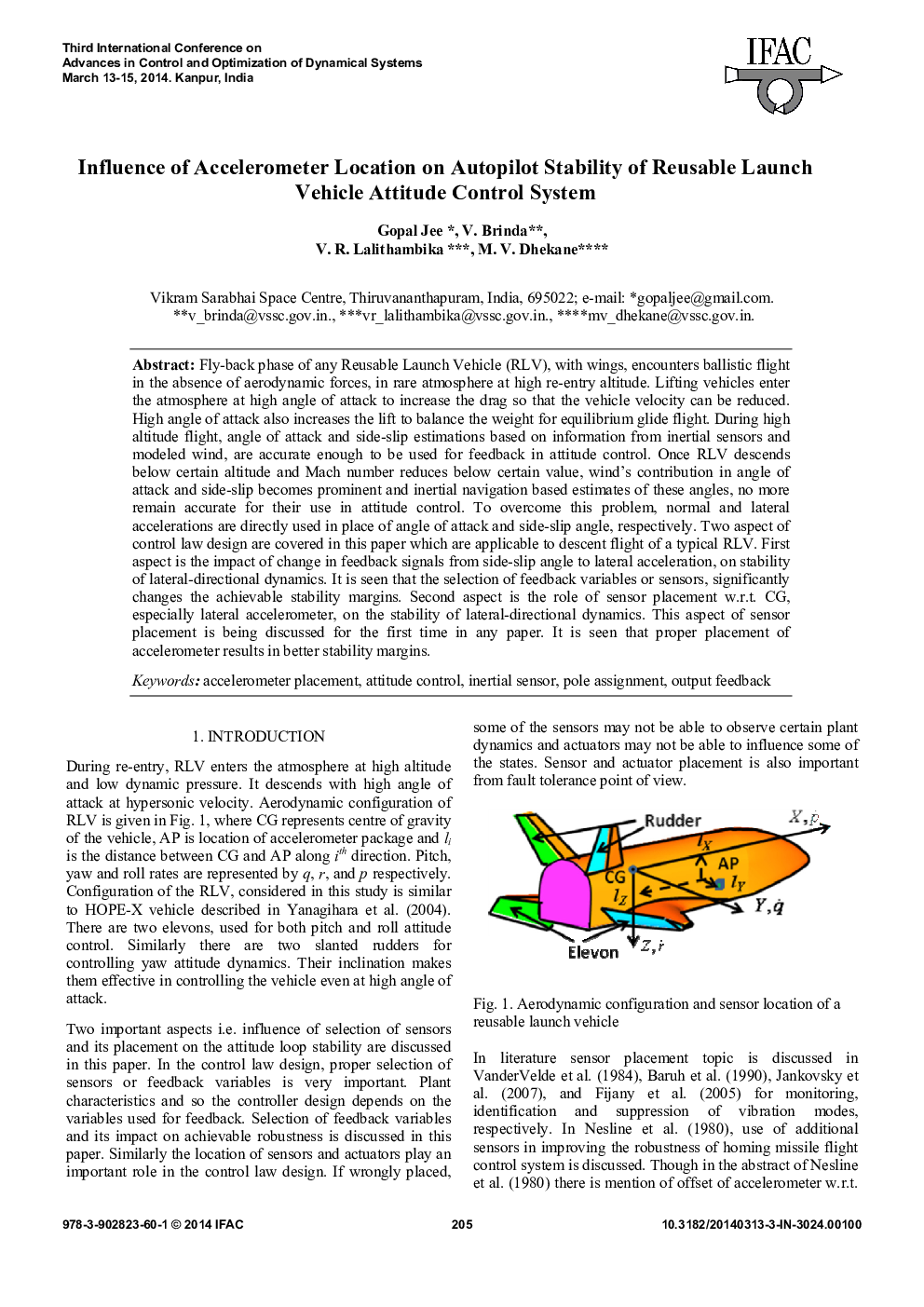| Article ID | Journal | Published Year | Pages | File Type |
|---|---|---|---|---|
| 713361 | IFAC Proceedings Volumes | 2014 | 6 Pages |
Fly-back phase of any Reusable Launch Vehicle (RLV), with wings, encounters ballistic flight in the absence of aerodynamic forces, in rare atmosphere at high re-entry altitude. Lifting vehicles enter the atmosphere at high angle of attack to increase the drag so that the vehicle velocity can be reduced. High angle of attack also increases the lift to balance the weight for equilibrium glide flight. During high altitude flight, angle of attack and side-slip estimations based on information from inertial sensors and modeled wind, are accurate enough to be used for feedback in attitude control. Once RLV descends below certain altitude and Mach number reduces below certain value, wind's contribution in angle of attack and side-slip becomes prominent and inertial navigation based estimates of these angles, no more remain accurate for their use in attitude control. To overcome this problem, normal and lateral accelerations are directly used in place of angle of attack and side-slip angle, respectively. Two aspect of control law design are covered in this paper which are applicable to descent flight of a typical RLV. First aspect is the impact of change in feedback signals from side-slip angle to lateral acceleration, on stability of lateral-directional dynamics. It is seen that the selection of feedback variables or sensors, significantly changes the achievable stability margins. Second aspect is the role of sensor placement w.r.t. CG, especially lateral accelerometer, on the stability of lateral-directional dynamics. This aspect of sensor placement is being discussed for the first time in any paper. It is seen that proper placement of accelerometer results in better stability margins.
